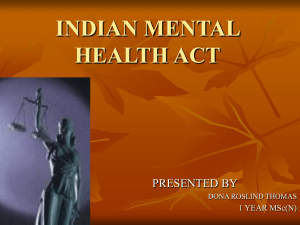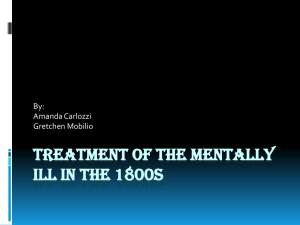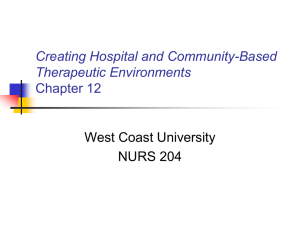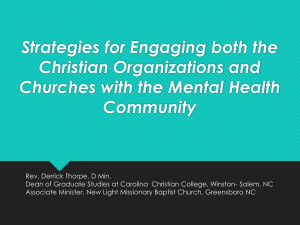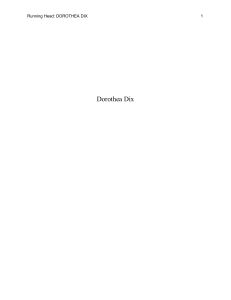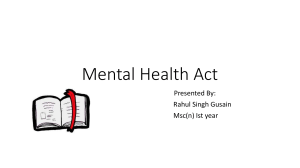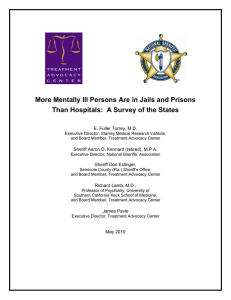Alternatives to Institutionalization: The Right of Persons with Disabilities 1
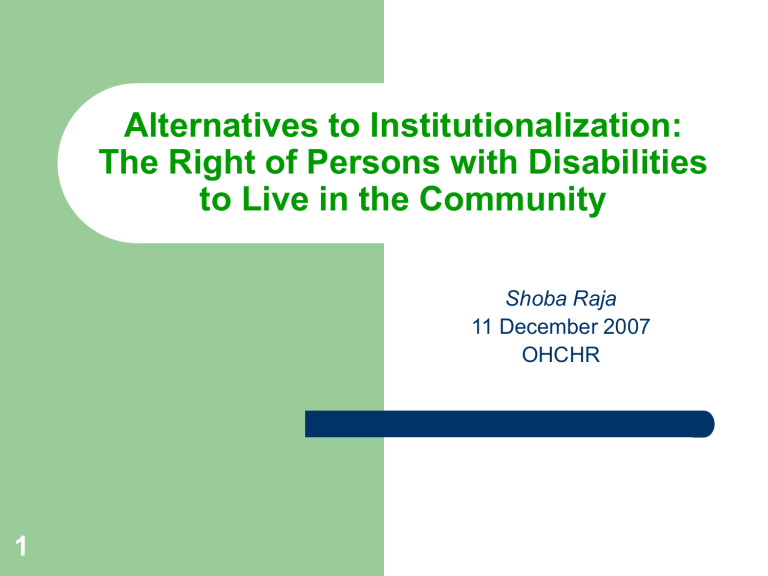
1
Alternatives to Institutionalization:
The Right of Persons with Disabilities to Live in the Community
Shoba Raja
11 December 2007
OHCHR
2
This Presentation will…….
Explore Key Concepts
Brief Review- Recap of Situations to establish needs and rights
Review Alternatives – What is possible through a case study of BasicNeeds
Points to think about…..
3
Two Key Concepts
associated ideas
Institutionalize – to place in a special location/house, lonely isolated but cannot live independently, lose individuality and ability to cope with life
Community Group of people, socially interdependent, participate together, relationships, share practices, collective action experientially – almost opposites
4
In the context of Human Rights and
Disability..…..
Current Situation :
in Institutions
in Communities
5
INSTITUTIONS
Experience…….
6
Degrading treatment
Neglect and lack of care
Inhuman conditions
Stripped of Dignity
INDISPUTABLE NEED FOR ALTERNATIVE
7
COMMUNITIES
8
Experience for majority…..
Neglect
Rejection
No access to treatment
Poverty
Stressed families
Ridicule, Taunts
Destitution
9
Community as an alternative….
Is it possible?
10
Case Study …..
BasicNeeds
An International Organization
BasicNeeds
Founded in 1999 by Chris Underhill
UK
Head Office
11
Colombia
Map
Laos PDR
Ghana
Uganda Tanzania
India
Kenya
Sri Lanka
12
Model
Mental Health & Development
Management
& Administration
Research &
Policy
Capacity
Building
Community
Mental
Health
Sustainable Livelihoods
13
Capacity Building
Breaking the silence of mental illness in communities
Community Mental Health
Ensuring treatment for mentally ill people with the active involvement of their families, communities…..
….and using local resources, government facilities
14
15
Sustainable Livelihoods
Supporting practical projects that help mentally ill people to realise their potentials and contribute to their communities
16
Research & Policy
Generate Evidence for influencing policy. Evidence which has viewpoint of users
17
Management & Administration
To ensure our work is efficient and professional and…… satisfies the needs of mentally ill people, their families
18
Acceptance
How we work
Talk to community
(Capacity Building)
Treatment
Community
Livelihoods
Self
Help
Groups
19
BasicNeeds Results
20
BasicNeeds Results
3/4
People treated now productive members of their communities
21
BasicNeeds Results
1\3 of caregivers now able to earn income
22
BasicNeeds Results
Self-help groups District Associations National Association
23
Some Key Conventions/Resolutions
Declaration of Human Rights
Convention against torture, Cruel, Inhuman or
Degrading Treatment
Convention on Rights of persons with disabilities
Resolution on The Protection of Persons with Mental
Illness and Improvement of their Mental health
Yet why does neglect, abuse, torture, humiliation continue to happen?
24
To think about…..
–
–
–
–
–
–
–
Approx. only 22% of mentally ill people remain chronically disabled. Majority are able to quickly mainstream
Few community mental health aspects in government policy and budgets
Where government policy/programme exists – no or ineffective implementation
Poor quality of services – personnel shortages, shortages of medicines, lack of training
Inadequate budget
Misconception and stigma
Excluded from poverty programmes – even from MDGs

